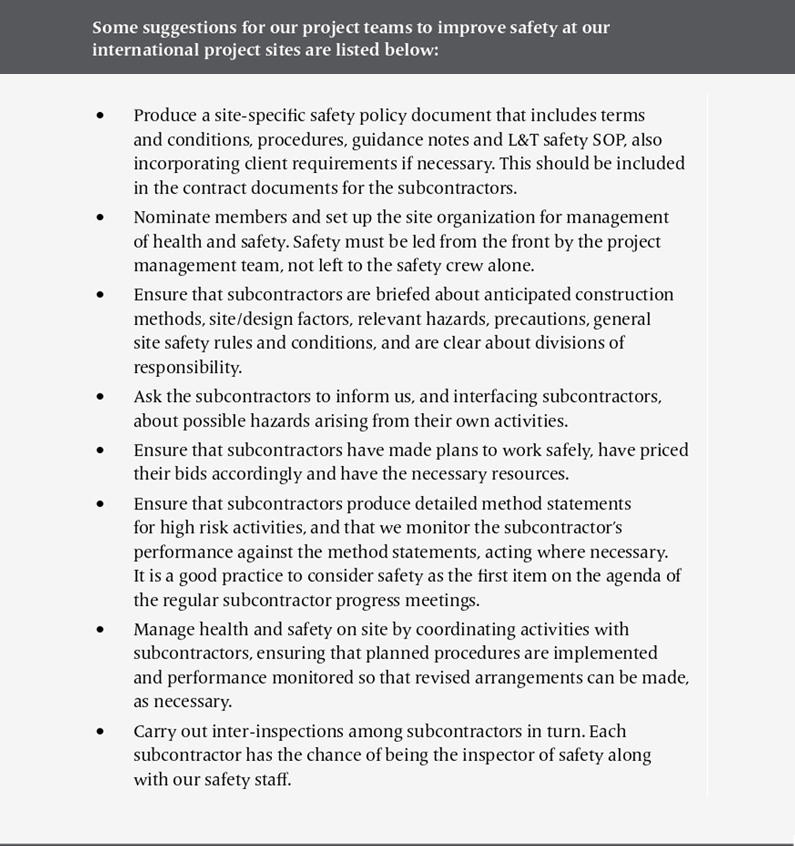
Rahul Sikka
Head – PT&D, Africa
Foreword
Safety at international L&T project sites
As one of the world’s oldest and largest EPC companies, L&T has maintained the culture of zero harm during site operations across Africa. As a result, we have reported zero fatalities for the last five years, zero Lost Time Injuries (LTI) for the current financial year, zero major environmental incidents for the last five years and zero environment legal contravention. Our efforts have been well recognized by external safety institutes including five of our projects that have won various international awards.
Based on our experience over the years at international projects, the project management team needs to pay close attention to safety management as it is one of the most important aspects of project execution. International project sites are necessarily operating in a social, economic, and physical environment that is quite different from those to which we are accustomed to at home.
To add to this, at a typical international L&T project site, one finds employees from several countries working together. They are quite different from each other in many aspects including their work ethic and culture. Our success lies in effectively bringing together employees of different nationalities under one umbrella, embracing the well-established L&T safety culture, and ensuring the continuous adoption of our safety best practices.
The safety practices and problems encountered at international construction sites are as wide-ranging as the various geographies themselves. All construction sites have their own unique aspects of safety which must be considered. L&T has a globally renowned reputation to uphold, as well as a unique and proud safety record to maintain. We are also well prepared to manage the safety aspects of the project. As the main contractor of a project, we are responsible for the safety of the whole project including the subcontractors’ part. However, the subcontractors we employ may not have enough experience and knowledge to ensure their own safety.
We have reported zero fatalities for the last five years, zero Lost Time Injuries (LTI) for the current financial year, zero major environmental incidents for the last five years and zero environment legal contravention.
As part of our preparation prior to commencing work, we must acquire a clear understanding of the subcontractors’ safety procedures, rather than to assume that the subcontractor is implementing a safety programme of their own. The responsibility of safety cannot be left to the individual subcontractors and as the main contractor, we should take an active part in ensuring that the subcontractor is exercising all measures necessary to provide a safe working environment.
We must moderate our expectations however and understand that a construction company’s emphasis on safety is often proportionate to its size. As an example, smaller companies may not place as high a priority on safety as larger companies. While there are smaller firms with excellent safety programmes and records, it is nonetheless a difficult process for them because of the expense incurred in implementing such a programme. Safety training is often left to on-the job learning, and implementation of their safety management programmes is usually left to the site foreman or project supervisor. Consequently, and because of the unrelenting pressures of their normal workload, the method employed by them often meets only the minimum requirements at best, while most fail even to do that.
Our success lies in effectively bringing together employees of different nationalities under one umbrella, embracing the well-established L&T safety culture, and ensuring the continuous adoption of our safety best practices.
